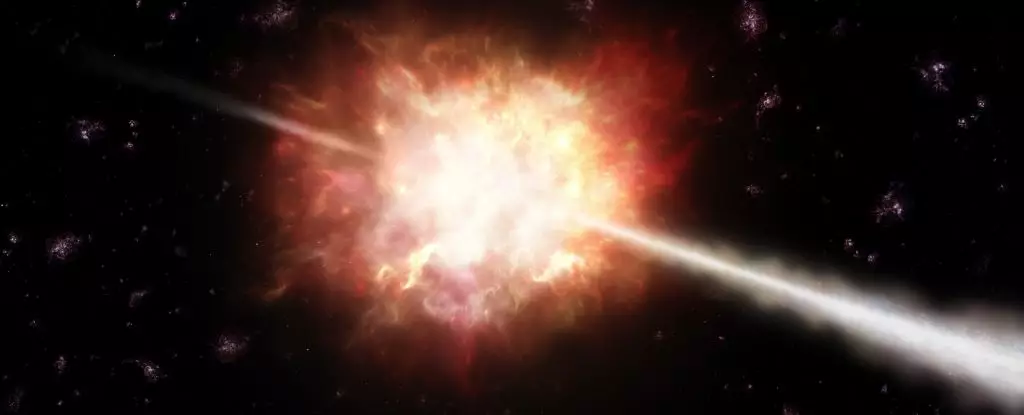Since the beginning of the Universe with the Big Bang, the majority of its composition has been dominated by hydrogen and a few helium atoms. With the passage of 13.8 billion years, elements heavier than helium were generated through various processes. Stars played a significant role in producing these heavier elements, but they could only go as far as creating elements as heavy as iron through nuclear fusion. The existence of elements heavier than iron required the identification of events capable of producing them. One such event that fits the criteria is a gamma-ray burst (GRB), considered the most potent explosion in the Universe.
Gamma-ray bursts can be categorized into two main groups: long bursts and short bursts. Long GRBs are connected with the demise of massive and rapidly rotating stars. The hypothesis is that the rapid rotation leads to the beaming of material ejected during the massive star’s collapse into narrow jets that move at immense speeds. Short bursts, on the other hand, are believed to occur due to collisions of two neutron stars – dense remnants of dead stars. An observation in August 2017 provided crucial evidence supporting this theory. The detection of a gravitational wave signal by Ligo and Virgo, followed by a short gamma-ray burst named GRB 100817A, pointed towards a collision of two neutron stars.
Following the event of GRB 100817A, numerous telescopes around the globe focused on studying its aftermath. The observations revealed the presence of a kilonova, described as a fainter version of a supernova explosion. Intriguingly, the kilonova exhibited evidence of producing many heavy elements. A study published in the journal Nature analyzed the explosion and identified two distinct categories of debris – one containing light elements and the other heavy elements. This finding raised questions about how these heavy elements were formed, given the constraints of nuclear fusion operations that can only produce elements up to iron.
The study identified the rapid neutron-capture process (r-process) as a potential mechanism for producing heavier elements beyond iron. The r-process involves the capture of numerous neutron particles by iron cores, rapidly increasing their mass and yielding heavier elements. The necessary conditions for the r-process include high density, high temperature, and a large supply of free neutrons – factors provided by gamma-ray bursts. However, events like neutron star mergers, although rare, may not be the sole source of heavy elements in the Universe.
A recent study delved into a specific long gamma-ray burst, GRB 221009, known as the BOAT – the brightest on record. This remarkable event, detected on October 9, 2022, led to an intensive observational campaign similar to that of the kilonova. Despite being ten times more energetic than its predecessors, the BOAT was found to be caused by an average supernova explosion, challenging the notion that the brightness of a GRB correlates with the magnitude of the associated supernova. Observations by the James Webb Space Telescope postulated that the number of heavy elements produced in the BOAT explosion did not exhibit characteristics of the r-process, further questioning the role of gamma-ray bursts as the primary source of heavy elements.
While gamma-ray bursts have been considered potential sources for the production of heavy elements in the Universe, recent studies have raised uncertainties about their contribution. The quest for understanding the origins of heavy elements continues, prompting researchers to explore alternative sources that might be responsible for the abundance of these elements in cosmic structures. The complexity of element formation and the influence of celestial events on the composition of the Universe remain intriguing areas of study for the scientific community.



Leave a Reply